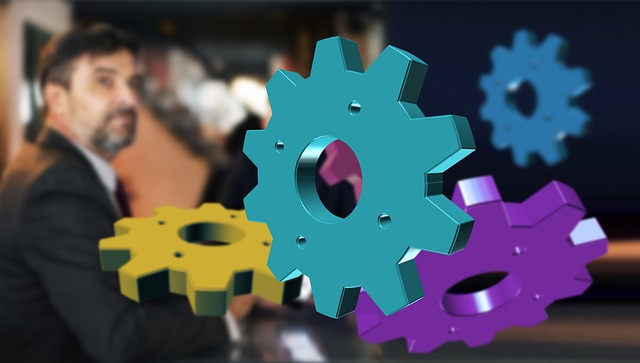Once thought of purely as a retail juggernaut, Walmart has quietly redefined itself in recent years as one of the world’s most tech-savvy enterprises. With innovations that stretch from robotic shelf scanners to predictive analytics and virtual shopping assistants, Walmart is proving that even the most traditional industries can be radically transformed by AI and machine learning (ML).
While Silicon Valley startups often take the spotlight in the AI race, Walmart is proving that retail’s future belongs to those who can harness data at scale and build systems that think, learn, and adapt. This isn’t just about cool tech—it’s about driving smarter logistics, enhancing customer experiences, and staying relevant in a rapidly evolving digital world.
Let’s dive into how Walmart is betting big on artificial intelligence and machine learning, and what their growing suite of platforms means for retail, consumers, and the future of commerce.
From Barcode Scans to Predictive Engines
Walmart processes billions of transactions every year. That’s a mountain of data, and for a long time, it sat mostly underutilized. The shift began when Walmart realized it could transform its vast data warehouse from a passive archive into a predictive powerhouse.
With advanced machine learning algorithms now woven through the company’s digital fabric, Walmart can forecast demand, personalize recommendations, improve route logistics, and even manage staffing needs with mind-bending accuracy. These systems analyze sales patterns, weather trends, demographic shifts, and customer behavior to offer timely, localized insights that drive decision-making across departments.
From knowing when to stock more baby formula in specific neighborhoods to optimizing promotions based on payday schedules, ML is helping Walmart make millions of small decisions that add up to massive impact.
The Walmart Data Café: Where Decisions Get Supercharged
At the heart of this AI evolution is the Walmart Data Café, located in Bentonville, Arkansas. It’s not a coffee shop—but it’s definitely fueling the business.
This high-powered analytics hub operates in near real-time, processing over 200 streams of internal and external data. Teams across Walmart use the Café to spot problems (like out-of-stock items or regional sales slumps) and deploy solutions in hours—not weeks.
Instead of relying on gut decisions, Walmart employees access visualization tools and intelligent dashboards that showcase performance metrics with stunning clarity. AI systems flag anomalies, suggest corrective actions, and even simulate different outcomes for proposed solutions. It’s data-backed agility at Walmart scale.
Machine Learning That Moves with the Customer
Walmart’s AI efforts go beyond the backroom. Whether you’re shopping online or walking through a Supercenter, machine learning is working behind the scenes to enhance your experience.
The company uses AI to tailor product recommendations based on past purchases, cart behavior, and even subtle cues like browsing pauses. In-store, shelf-monitoring robots spot misplaced items and monitor inventory, while computer vision systems identify trends in foot traffic and adjust layouts accordingly.
And because this intelligence is layered into the Walmart app and website, customer preferences translate across platforms—whether you’re buying from your desktop, phone, or standing in the shampoo aisle.
Fulfillment Gets Faster (and Smarter)
Perhaps nowhere is AI having a more dramatic impact than in fulfillment. Walmart’s massive investment in its supply chain includes smart warehouses, automated sorting centers, and machine learning systems that forecast inventory needs by store, region, and even day of the week.
AI helps Walmart determine when and how items are picked, packed, and shipped—with different algorithms used for perishables, bulky goods, and seasonal products. This level of refinement keeps shelves stocked and shipping times short.
In the middle of this shift is Walmart’s evolving suite of Walmart Automation Services, designed not just for in-house use but for third-party sellers, too. These services combine AI-driven forecasting, inventory optimization, and end-to-end logistics automation to help sellers grow efficiently on Walmart’s platform. It’s an ecosystem approach—one that levels the playing field between small businesses and retail giants.
Virtual Try-Ons and Vision AI
One of the most visible examples of Walmart’s AI push is in how customers shop for clothing. Thanks to the acquisition of Zeekit, a virtual fitting room startup, Walmart now offers a machine learning-powered “Choose My Model” experience. Shoppers can see how clothes would fit across a range of body types, helping reduce return rates and improve satisfaction.
Behind the scenes, computer vision models classify garments, assess size and style compatibility, and adapt imagery in real time. It’s visual AI with a real-world payoff—and shoppers are noticing the difference.
AI in Workforce Planning and Productivity
Walmart’s team isn’t just thousands of robots and servers—it’s also more than 2 million associates worldwide. And even here, AI is lending a hand.
Machine learning helps optimize scheduling by forecasting peak shopping hours, minimizing labor costs, and reducing employee burnout. Internal mobile apps provide workers with insights into shelf health, customer requests, and product locations—all powered by real-time data and predictive prompts.
Rather than replacing workers, Walmart’s tech stack empowers them to focus on higher-value tasks like customer service, training, or merchandising.
Responsible AI: Ethics and Transparency
It’s not enough to build powerful AI—you’ve got to use it responsibly. Walmart has made public commitments to ethical AI development, putting guardrails in place to avoid bias, protect customer data, and ensure its systems are understandable and accountable.
The company enforces strict governance over its models, especially those involved in pricing, hiring, and product recommendations. An internal review process ensures decisions made by AI reflect fairness and deliver equitable outcomes. When models fall short, they’re flagged and re-trained.
For Walmart, trust is part of the technology.
Strategic AI Partnerships
Walmart hasn’t gone it alone. It’s partnered with Microsoft Azure to power some of its cloud-based AI initiatives, and continues to work with startups and academic institutions on retail-focused ML research.
By blending homegrown innovation with external expertise, Walmart moves faster and stays flexible—two traits you wouldn’t expect from a company its size.
What the Future Holds
Walmart’s investment in AI is far from finished. In fact, it’s accelerating. Areas currently in development or testing include:
- Autonomous delivery via drones and driverless cars.
- Natural language processing for customer service bots and smart search tools.
- Real-time voice shopping via integration with home assistants.
- Dynamic shelf planning using heatmaps and behavioral analytics.
As these technologies mature, they won’t just enhance convenience—they’ll redefine it. And Walmart is poised to be at the center of that revolution.
Final Thoughts: Retail’s Smartest Engine
Walmart’s AI journey isn’t about bells and whistles—it’s about building a more intelligent, responsive, and scalable retail machine. From robotic automation to advanced analytics, the company is proving that tech-forward thinking and retail roots can coexist, and even thrive together.
Whether you’re a startup founder, a fellow retailer, or a curious customer, there’s something inspiring about a 60-year-old brand transforming itself into one of the most data-driven businesses on earth.
Because in today’s world, intelligence isn’t a bonus feature—it’s the backbone of sustainable growth. And Walmart’s showing how it’s done.


